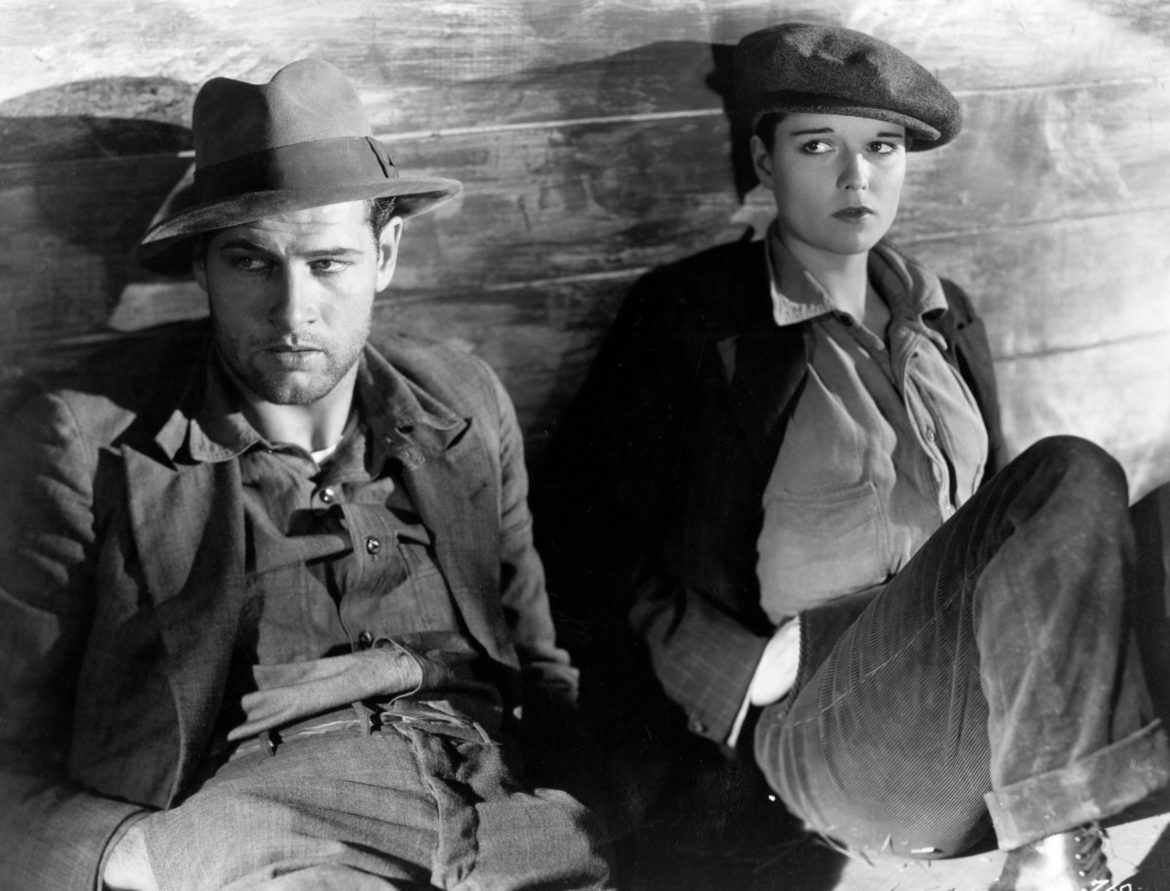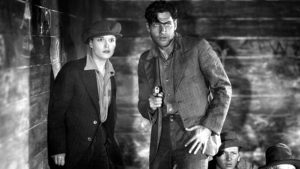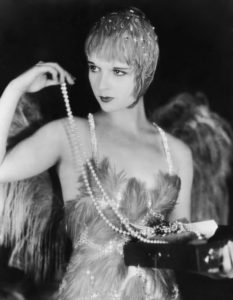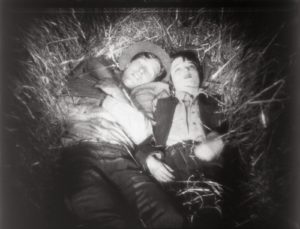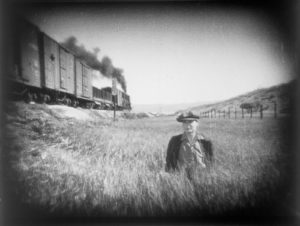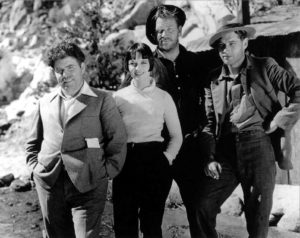Starring the great Louise Brooks, in her final American film before high-tailing it abroad and becoming an icon in G.W. Pabst’s Pandora’s Box (1929), the gritty, tragi-comic hobo yarn Beggars of Life opened the 2016 San Francisco Silent Film Festival last Thursday.
It’s a reasonable selection. Combining light gags, physical comedy, dour realism, and exciting train sequences (courtesy of director William Wellman, a year after his Wings won the first Academy Award for what we now call Best Picture), Beggars of Life is typical of any number of 1928 films. But it also marks a moment of transition on several fronts.
Not only does it feature an androgynous Brooks in hobo clothes rather than her previous Ziegfeld Follies outfits, and a characteristic fascination with the train-hopping lifestyle that prefigures Depression-era films (as well as post-Depression depictions like Preston Sturges’ Sullivan’s Travels), but it also signals the twilight of the silent years.
In something of an ironic choice for a Silent Film fest, Beggars of Life was actually marketed as Paramount’s first sound picture, thanks to a brief song (“Hark The Bells”) apparently belted out by top-billed Wallace Beery (a la Al Jolson in The Jazz Singer). The sound didn’t survive the years, though, so Wellman’s picture is once again a true silent.
Beery may be top-billed, and turns in a performance Brooks called “a little masterpiece,” but he doesn’t even show up until nearly halfway through Beggars of Life. This is decidedly Brooks’ show. Credited only as The Girl in this adaptation of Jim Tully’s novel, her character is introduced having just shot and killed her lecherous father – she and wandering hobo Richard Arlen meet-cute over the corpse, a rather grisly touch by any standard.
Arlen takes her under his wing, promising to get her on a train headed east while he makes his way west and up to Canada, where a family relation has a homestead he hopes to work. (Here, as throughout the film, everyone’s ambitions and hopes lie forever Elsewhere.) Of course, Brooks and Arlen end up making their way together, she in men’s clothes seeking to avoid detection – by the cops, for murder, and by her fellow transients, who invariably mean her quite specific ill. The threat of sexual assault looms over everything – cross-dressing and androgyny is no mere affectation here, but a survival strategy.
After some adventures on the road, including an adorable night spent bunking down inside a hay pile, Beery’s Oklahoma Red shows up at a hobo encampment referred to as “The Jungle,” bringing with him a keg of booze, singing the song we no longer get to hear. He’s immediately recognized, and feared. When The Girl is revealed as, in fact, a girl, things get dodgy pretty quick, and the noble Arlen more or less staves off a gang rape. The “dicks” show up looking for the murderess, and the entire encampment flees to board a passing train.
In a long sequence, most notable for a series of punny, wordplay-focused intertitles (a curious comic strategy for an inherently visual medium), Oklahoma Red presides over a kangaroo court to decide the fates of The Boy and The Girl. The outcome is pre-ordained, but chaos ensues anyway and our heroes make a break for it.
Several exciting (and dangerous) train chases later, Wellman and Tully redeem Oklahoma Red, who (somewhat improbably for a guy who not long before was contemplating spearheading a gang rape) finds himself so impressed by the devotion of the young lovers that he helps them escape the clutches of the law, at great cost to himself.
A lone Black character, Big Mose (Edgar “Blue” Washington, described in Cari Beauchamp’s Film Fest essay as a “former prizefighter and Negro League baseball player”), plays a minor role – as usual for the period, he’s portrayed as a bit of simpleton, but, unusually, he’s also not a purely comic foil, conveying something of an inherent dignity not frequently granted Black actors and operating on more or less equal footing with his white co-stars. Things don’t end well for everyone, but our lovers are joined, on the road again, and Brooks is, at long last, adorned in feminine finery as the pair make their way to a new life in the north.
Beggars of Life was tepidly received in its day: The New York Times, while admiring Brooks’ performance, called it a “rather a dull and unimaginative piece of work, which is largely confined to scenes of tramps hopping freight trains;” Photoplay disagreed on the matter of dullness, but still managed only to deem it “good entertainment,” with “incidents from tramp life [that] are interesting because of their novelty.” Both reviews and others focused more on the effectiveness, or lack thereof, of the brief sound effects, signaling again the film’s position at a crossroads.
Viewing it today, the focus on androgyny and the frankness with which it treats the threat of rape are its most notable qualities. Neither are unique to Beggars of Life – in fact, the “novelty” Photoplay refers to is shared, as Mary Mallory points out in the Festival’s materials, with films like Miss Nobody (1926), Alias The Deacon (1927), Wellman’s own Wild Boys of the Road (1933), and Half A Sinner (1934), not to mention Sturges’ much later classic, all of which depict not just hobo life but the need for “sheboes” (an actual term popularized by a serialized novel by Tiffany Wells) to cloak their femininity in male attire to avoid attack on the road.
This would be Brooks’ last foray into such material, however. Plagued by rumors and gossip, most of which she later confirmed in famously frank tell-all memoirs, she would leave the continent the following year for Pabst, Pandora’s Box, and celebrated status (including boasting one of the Hairstyles That Changed The World), while Beery would go on to win an Oscar for The Champ three years later and a long career playing what might be called “Wallace Beery types.” “Wild Bill” Wellman would continue cranking out a steady stream of hits – The Public Enemy, A Star Is Born, The Ox-Bow Incident – through the late ‘50s, while Richard Arlen was left to grouse about missing out on stardom he felt was rightfully his but continuing to work (mostly in television) for decades.
Still, in Beggars of Life, all four contributed to something that remains fascinating today – nuanced performances, comic touches, social critique, and train stunts that still thrill in the Eastman Museum’s restoration – all perched on the cusp of a new moment in cinema’s history.

